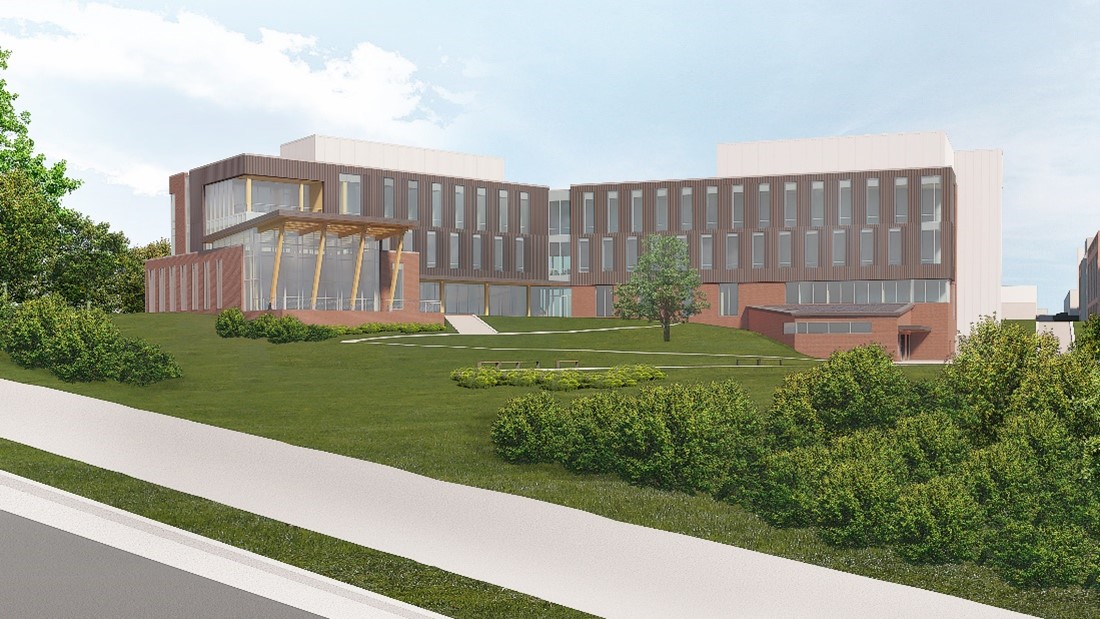February 2024 - December 2025
This project is a new, approximately 85,000-square-foot building to house Clemson University's Forestry and Environmental Conservation (FEC) department, which is part of the College of Agriculture and Life Sciences (CAFLS). It will replace the existing Lehotsky Hall on the Ag Quad. Spaces within the building will include teaching and research labs, offices, classrooms, storage, and collaboration spaces necessary to support the department in both its teaching and research missions.
The gateway design is based on a series of folded wings that integrate into the site and create a garden courtyard. The indoor-outdoor connection is paramount, and the landscape will be an integral teaching tool to supplement the learning environments within the building. The design will have a mass timber structure, primarily utilizing CLT floors and glulam beams and columns. The north "campus" face will offer a new front porch for students that will terminate the existing Ag Walk and further activate the southern portion of campus. While remaining contextual to Clemson University with a traditional brick and metal panel material palette, it will showcase the building's mass timber components in several key locations.
Project Team
Architect, Interior Design, Sustainability, Structural, Mechanical, Electrical and Plumbing Engineering:
 Charlotte, NC
Charlotte, NC
Landscape Architect:
Core Studio Design
Baltimore, MD
Contractor:
Ajax Building Company
Greenville, SC
In addition to pursuing two Green Globes, the design team is conducting a life cycle carbon analysis to understand the building's embodied and operational carbon.
Tree Management Plan
There will be a total of 31 trees removed and 137 planted afterward for a net gain of 106 trees. A portion of the site will be reforested with native trees to provide a teaching outdoor laboratory and improve the current ecosystem. Trees are also used for shading for hardscape elements, improving stormwater water quality, beatification, animal habitat and to enhance the campus environment.
Highlights
- Modern spaces for teaching, learning, research, and collaboration
- Surrounding landscape integrated into the building as a learning environment
- Unique mass timber structure
